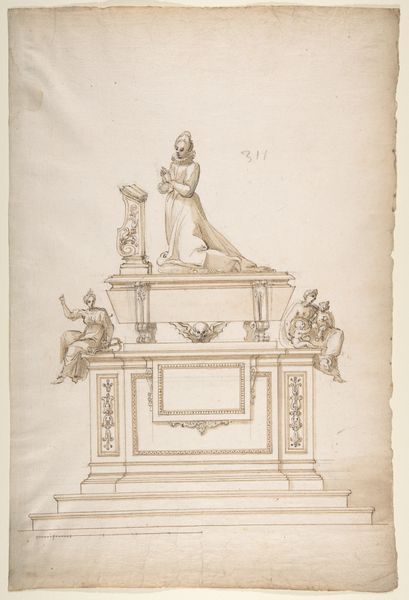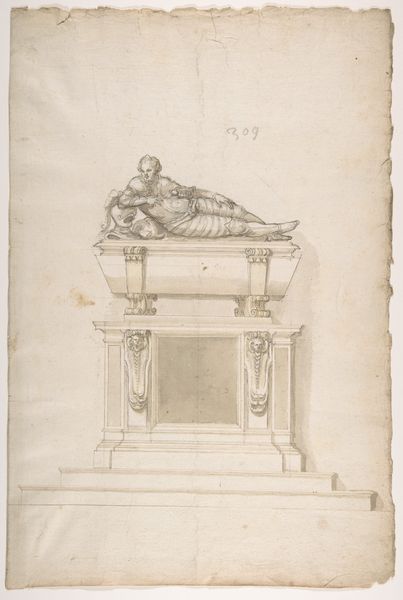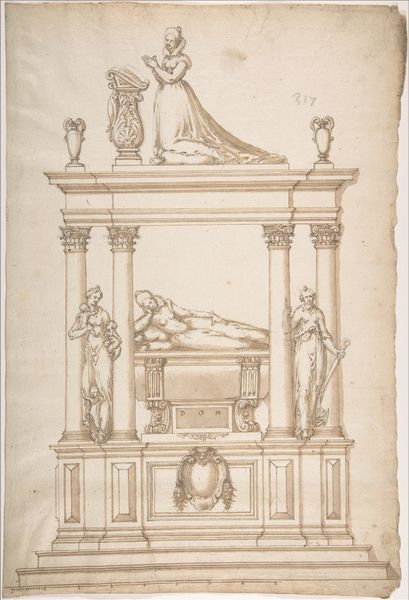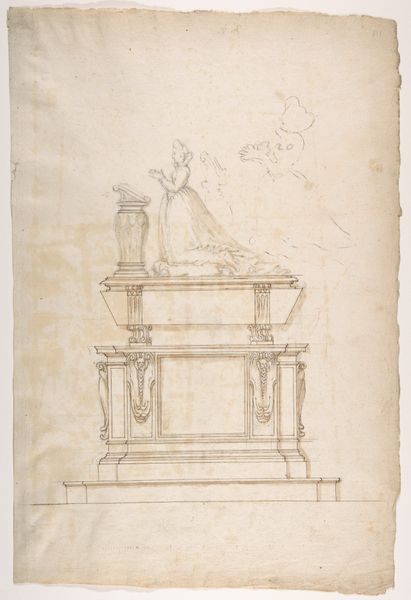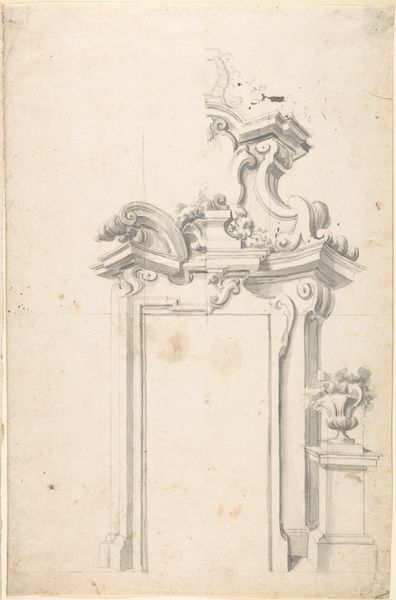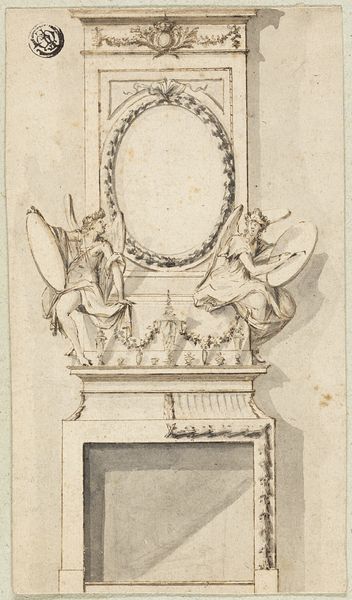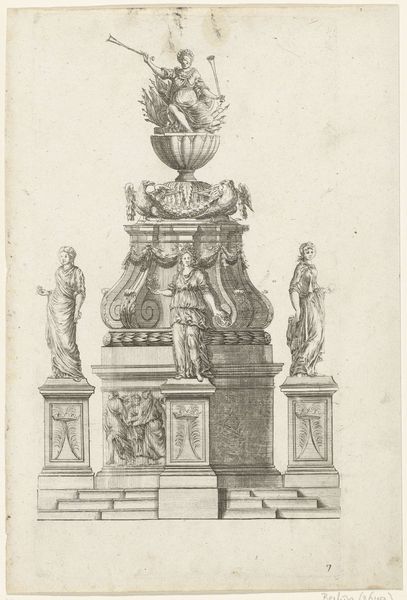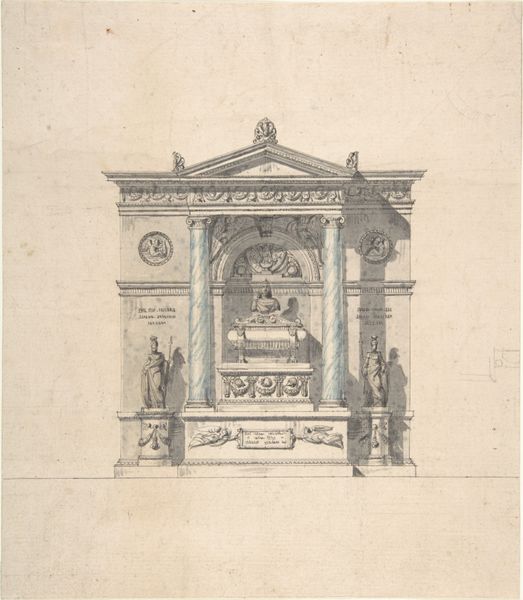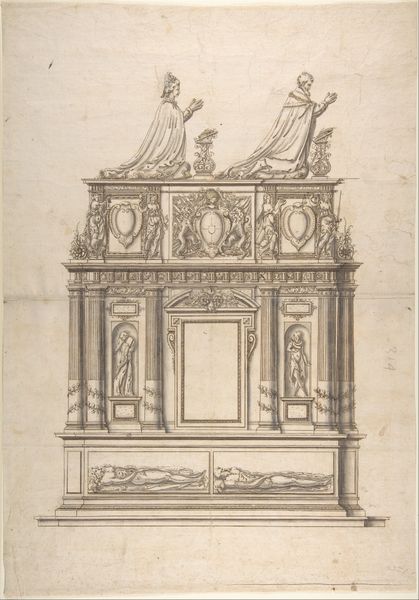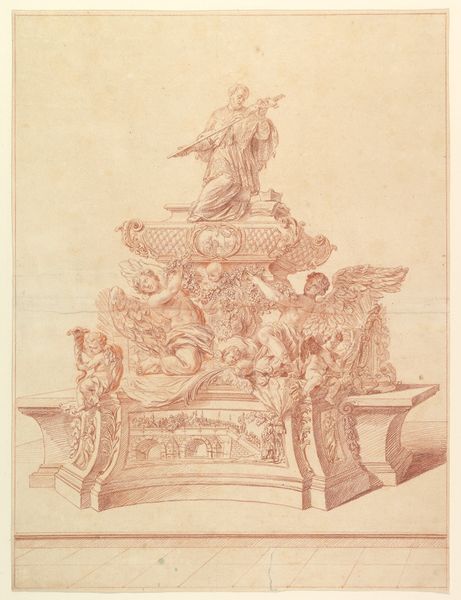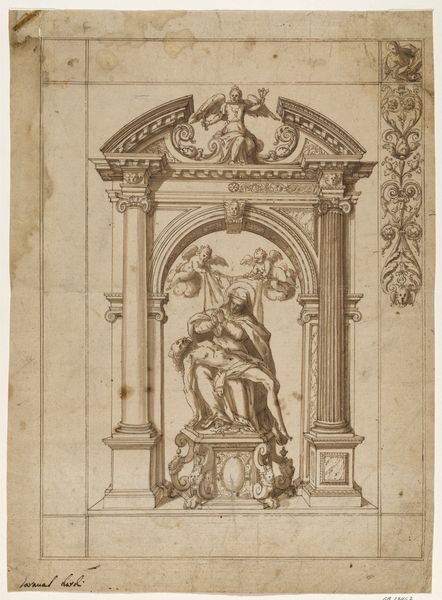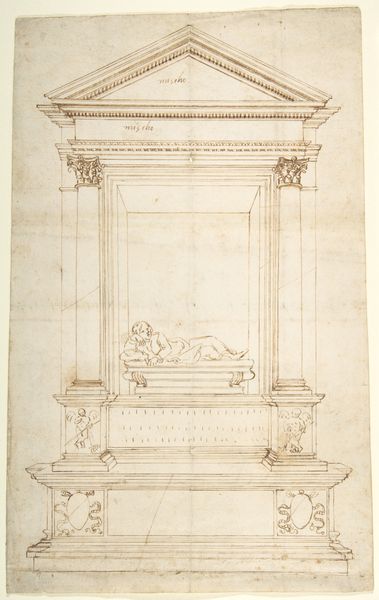
drawing, print, paper, ink
#
portrait
#
drawing
# print
#
figuration
#
paper
#
ink
#
men
#
history-painting
#
academic-art
#
italian-renaissance
#
sword
Dimensions: sheet: 16 3/16 x 11 3/8 in. (41.1 x 28.9 cm)
Copyright: Public Domain
Editor: This delicate ink drawing on paper is titled "Design for a Man's Tomb," made by an anonymous artist in the 16th century. I'm struck by how meticulously the armor and ornamentation are rendered, almost like a blueprint. What stands out to you in this piece? Curator: The immediate question is the production process: who designed this, and for whom? The intricate details suggest a highly skilled workshop, perhaps connected to a specific court or wealthy family. We need to think about the economic and social relations that made such a design possible. Consider the labor involved, from sourcing materials like ink and paper to the craftsman's time. What does it mean that such artistry might commemorate the deceased? Editor: It does seem excessive, the skull details right above the base. Did people really want something like that on their grave? Curator: Material culture reveals a lot about anxieties and aspirations. The skull, for instance, prompts thoughts of mortality and status. Marble, evident in the tomb design, would signify wealth and power. What can the contrast between these raw, brutal elements and precious materials tell us about society's beliefs around death? I am equally fascinated by the tools—what did the craftsman use, and how did techniques influence the aesthetic? Editor: I never considered the practical elements informing the design, especially as the tomb design might be for the wealthy! This has expanded my perspective on interpreting historical art like this. Curator: Exactly. Shifting the focus to production reveals much more about cultural values of the period. Perhaps a study of Renaissance ink-making techniques and marble quarries of the day might shed additional light!
Comments
No comments
Be the first to comment and join the conversation on the ultimate creative platform.
